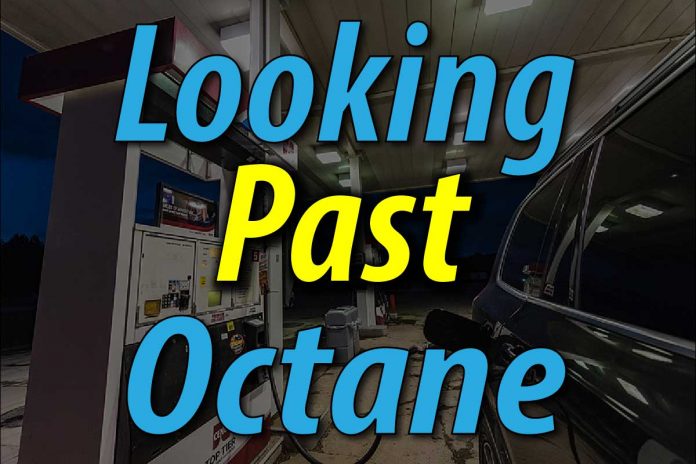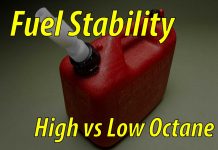High Ratings Don’t Always Mean High Performance
Will higher octane gas increase horsepower? Yes, but actually no, depending on the application. If you’ve been around powersports for any length of time, you’ve probably heard a lot of misinformation when it comes to choosing fuel. You might hear things like “high octane fuels burn slower,” or “motors that aren’t built for it can’t benefit from high octane fuels.” The worst is trying to use an extremely high octane to take your ignition timing to the limit.

In actuality, that information is ONLY accurate when talking about pump gas that tops out at 93 octane. Because no, you don’t need to run 93 octane in your stock Ranger. But if you start talking small-batch racing fuels, then these statements are far from accurate. And if you’re looking into using race fuel, you need to look at WAY more than just octane.
How To Measure Octane In Gas
Before we get into all that, lets recap on how the ATSM (American Society for Testing and Materials) calculates octane ratings.
The ATSM uses a small single-cylinder engine with an adjustable compression chamber called a Cooperative Fuel Research (CFR) engine. You can read all about how to measure octane ratings in this article. The engine runs two tests to get the RON and MON values, then average them (R+M)/2).
This average is known as the Anti-Knock Index (AKI). The AKI is the measurement used across the board for pump gas and race gas.
You’ll often hear the MON is more accurate than the RON because the MON is tested using more rigorous testing conditions. Of course, lab conditions are not even close to what you’re going to do to your engine in the real world. On that note, only run from a dig if they put up the cash!
Related: Castor motor oil was the first motor oil, and it’s still one of the best!
Don’t Rely On Octane Numbers Alone!
For a good example of when octane is not the only fuel parameter to consider, let’s look at the engines that Formula 1 cars use. These engines have compression ratios surpassing 18:1 and turn at upwards of 20,000 RPM. F1 engines seem like a front-runner for 120 race gas. Except no, they use 96 octane!
It’s challenging to find a broader assortment of race cars than what shows up at your town 1/4 mile. On any summer weekend, you can see all types of engines from boosted rotary engines to roaring big blocks, and with all manner of power boosters in the mix. These differing needs are where looking past octane becomes essential. What works in your built LS6, won’t necessarily work in your friends boosted B16.
Consider The Burn Speed of The Fuel
Naturally aspirated competition engines with massive combustion chambers turning at extreme RPM indeed need quick-burning fuel. They need that high octane to stop spontaneous combustion, and they require a fast-burning fuel so the flame front can cross the full bore of the combustion chamber instantly. If you are not sure which gas burns faster than others, one sign is specific gravity. You can read all about specific gravity in this article, but basically, light fuels burn quickly, and heavier fuels burn slowly. Look for a specific gravity near 0.70, and you will probably see a quick-burning fuel. As always, discuss each fuel with the manufacturer to confirm your theories. You might find out that a particular fuel with an extreme rating may also be an extremely fast-burning fuel as well!
You also might be shocked to find out that fast-burning fuels may not need as much spark advance as their slower-burning equivalents. For example, you are going to have a hard time dialing in your new fast-burning fuel if you are still using the carburetor and timing set up from your last fuel.
Simply retard the timing a little and see what you get. You may be experiencing TOO much spark advance! In this case, your safe from pre-ignition, but your spark advance is past the point of optimal ignition.
So a little less advance, and a higher rating can (potentially) make some power!
If you have any questions or anything to add, please leave them in the comments or on our FaceBook page!





